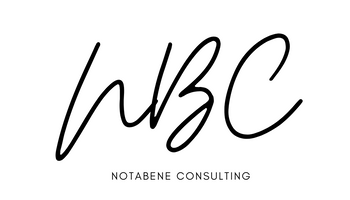
Train the trainer
Formation créée le 03/06/2024. Dernière mise à jour le 04/09/2024.
Version du programme : 1
Programme de la formation
- Learning the basics of training and andragogy - Facilitating your trainees’ learning process : the right activities, the right progression - Practicing building an efficient and motivating training sequence: goals > approach > training techniques > feedback/evaluation
Objectifs de la formation
- -Learning the basics of training and andragogy
- - Facilitating your trainees’ learning process : the right activities, the right progression
- - Practicing building an efficient and motivating training sequence: goals > approach > training techniques > feedback/evaluation
Profil des bénéficiaires
- Trainer
- knowledge of group leadership and pedagogy
Contenu de la formation
-
The launch of a training
- > Introduce yourself as the trainer of the day. Think of the way you’d like to do it, and what pieces of information you’d like to share about yourself. If you had wished to use props (slides or else), pretend you have them. ex: « As you can see on this slide… » I will not tell you when to start asking for the group’s attention. You’ll decide when you’d like to speak :)
- > Ask each participant to introduce himself. You’re the trainer. Pick the method you like. Then have the participants introduce themselves. You’re in charge of making everyone speaks.
- > Launch the topic of the training and the goals. You’re the trainer. Give meaning to the topic of the day so that the participants will feel involved and ready to start. Topic: « Train the trainer »: upgrade your skills at training! Goals: Practice training techniques Give and get feedback Review basics of training (voice, posture, induction, coaching, questioning, giving feedback, structuring progression, prompting creativity, inducing changes…)
- > Collect expectations. You’re the trainer. Collect the expectations of the group on the topic of the day. Give meaning to the importance of knowing what the group is hoping to get from the training. Choose the way you’d like to keep them so we can check if they were fulfilled at the end of the day.
- Feedback time! 5mn for self-evaluation and preparation of the feedback from the group: « How did you feel as trainee? What did you like? What would you have liked differently? » 15mn for the feedback sharing on all tasks Input: the steps to quality feedback and the right ratio (Losada and the sandwich feedback)
- —> Input: 1- Posture and voice when addressing the group. Asking for attention. 2- Introductions: the role of introducing each participant and the types of personalities (introverts, ambiverts, extraverts) 3- Giving meaning: benefits for the participants + programme of the day. Sets a frame. Starts to raise people’s expectations. Reassuring. 4- Expectations: allows for people to express doubts, fears, rejection… and feel heard. Benefits for the trainer (put emphasis on certain aspects). Example of the « prisoner buyer tourist explorer »
-
2. Building a training
- —> Picking a topic and putting it into words. > Each participant chooses a training topic and finds a title so that they’ll get people excited to start the training. 5mn preparation and then sharing to the group
- —> Feedback time + quick input Marketing matters! Give your training topic some class / fun / creativity / solemnity (ex: masterclass)
- —> Setting clear goals for the training > Now that you have your training topic and have given it a sexy title, write down the goals in simple words: What the participants will learn / review / get deeper knowledge on What they will practice doing What behavioral skill they’ll develop Share with the group as if you were starting the training. They should feel curious, motivated, reassured and ready to start.
- —> Feedback time + quick input Having clear goals in mind allows you to know when they are reached, even though timing has gone wrong or things have unfolded in an unexpected way (questions, reactions, discomfort, rebellion, anecdotes, …) Goals = action verbs. A skill = knowledge + know-how-to-do + know-how-to-be
- —> The choice of activities Input: 2 kinds. Pedagogy vs. andragogy. Some activities are top-down, and participants are passive / not autonomous (teach, explain, show, tell). Other ones require participants to be active and autonomous (question, brainstorm, group work, role play…) > Collective review of some kinds of activities and the contexts they’d be more appropriate (learner’s profile, content of training, timing …)
- —> The match Let’s review what we saw this morning! 2 teams of 2 Think of a question to reactivate the things learnt/discussed this morning. Each team should reach 20 points and bets on a number of points for each answer.
- —> Practice brainstorming! Each participant chooses a different topic. We make sure they all differ. Each one in turn will : launch the brainstorm (give it meaning) choose the way he’d like to have it (post-its, collective, group work first …)do it live
- —> Feedback time + quick input Brainstorms only work if: people feel free to give ideas all ideas are okay they have time to think Post-its help people who like to have some time thinking beforehand. Allows for same answers to come up twice.
- —> Practice role play! > Sales coaching. 1 participant becomes the trainer - 1 the salesman - 1 the client The 4th participant watches and takes notes for feedback. The trainer: launches the role play. Gives it meaning. Explains the rules. Faces the reactions of the trainees. Manages the timing. Asks for self-evaluation and gives feedback. The salesman: prepares the way he’s going to greet the client and the items he’ll promote The client: thinks of a role (nice person, old lady, demanding woman, undecided person…) The observer: prepares the list of 5 things he’ll focus on while watching the role play to give quality feedback If we have time: we swap roles with another set of 3 people.
- —> Feedback time + quick input Role play is an excellent way of practicing a new skill in a safe environment that is the closest to reality. Requires: trust, frame, meaning and quality feedback Beware of stigma: being shy, reserved, introvert, perfectionist, … makes it really hard to face the fear of failure. Giving meaning is crucial.
- —> Assessing time and structuring Input: « less is more ». Flexibility = clear goals in mind + 2-3 meaningful and interactive activities Give time to meaningful unexpected events. Get ready to skip / shorten / summarize / send as a booklet or memo to save time. —> Input: the pace of a training. Ups and downs. Intense vs. less intense moments.
-
3. Making sure people will put new things into practice after the training
- > Get ready to conclude the training. Think of 4 missions for each participant today. 5mn preparation Each participant gets something to do to conclude. ex: list up all things shared during the training get feedback action plan: who would like to put what into practice (1-2 things max) expectations: did we meet them?
- Input: after the training, check on each participant to see what they’ve started to implement and how they feel about it. Not « If you need help, call me ». But « I’ll call you in a month to see how you’re doing. »
QUALITY OF THE TRAINER : Bénédicte Ducoté is personally in charge of your training as Training Manager. She has 25 years' experience in regional and network management, as well as over 5 years' experience in designing and delivering pragmatic training courses that are consistent with the company's objectives and policy.She will act as your quality and disability advisor, ensuring that the training runs smoothly and is adapted to your needs.
Qualité et satisfaction
Modalités de certification
- The results are assessed by means of an evaluation procedure which determines whether the trainee has acquired the knowledge or professional skills set out in the training objective. The assessment procedure takes the form of a formative assessment during the training to validate the acquisition or improvement of skills at each session. The performance assessment analyses the implementation of the training using the criteria of relevance, consistency and efficiency. The assessment takes the form of a quiz given by the trainees to validate what they have learnt.
- issue of a follow-up certificate
